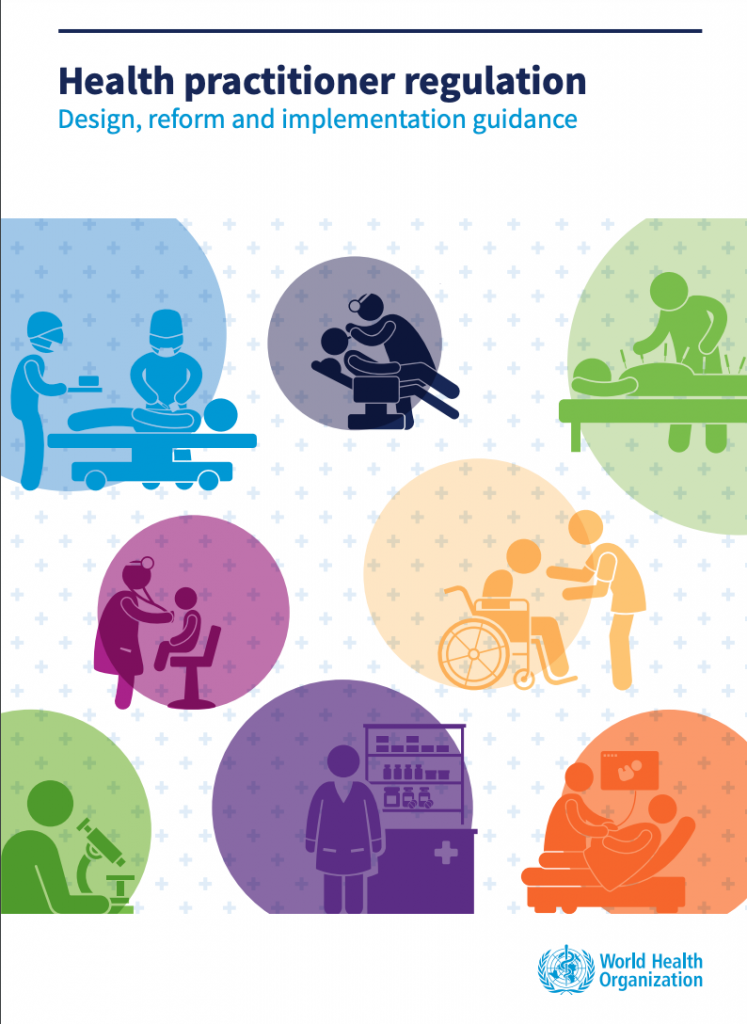
In today’s rapidly evolving healthcare landscape, effective regulation of health practitioners is crucial to ensuring patient safety, maintaining public trust, and fostering professional accountability. The World Health Organization (WHO) recently (September 2024) released its Health Practitioner Regulation: Design, Reform, and Implementation Guidance, which provides a comprehensive framework for countries seeking to strengthen or reform their health practitioner regulatory systems. This guidance aims to help governments and regulatory bodies create policies that are transparent, adaptable, and focused on high standards of care.
Key Areas of Focus
The WHO guidance highlights essential elements of an effective regulatory system, including:
- Standards and Qualifications: Establishing clear standards for entry into practice ensures that healthcare professionals meet rigorous training and competency requirements before serving patients.
- Continuous Competency and Professional Development: By encouraging ongoing education, regulatory systems can keep practitioners’ skills up-to-date with medical advancements and best practices.
- Accountability and Misconduct: The guidance provides recommendations for addressing misconduct and ensuring accountability, including mechanisms for reporting and responding to malpractice.
Emphasis on Collaboration
The WHO’s guidance stresses that successful regulation depends on collaboration among government agencies, healthcare providers, educators, and the public. By involving all stakeholders, regulatory policies can be better aligned with the needs of both practitioners and the communities they serve.
Supporting Adaptability and Reform
For countries with existing systems, the guidance includes strategies for effective reform, allowing regulatory bodies to modernize practices, respond to healthcare challenges, and improve efficiency. It also emphasizes a phased approach to help ensure smooth transitions and sustainable improvements.
A Roadmap for the Future
In providing this guidance, WHO aims to assist countries in developing regulatory systems that safeguard patient health, enhance public trust, and support practitioners. With a focus on transparency and adaptability, this framework is a significant step toward a more responsive, resilient global healthcare system. We at IHUL look forward to discussing this with colleagues and external stakeholder friends in the near future.
Read more here: https://iris.who.int/bitstream/handle/10665/378775/9789240095014-eng.pdf?sequence=1
- Building HEALTH 2025 Bucharest International Forum, part of ROHO - 27 November 2025
- IHUL Speaking at Healthy Hospital Design Conference - 8 October 2025
- Knitting the Air Pollution Awareness Project - 8 October 2025

Be the first to comment on "Building a Safer Healthcare System: WHO’s Health Practitioner Regulation Guidance"